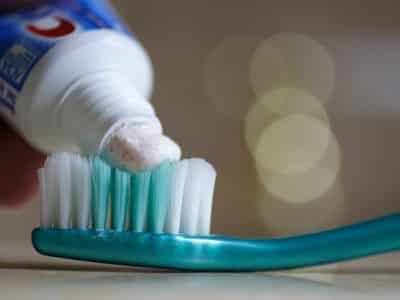The Canadian federal government has announced that a ban on microbeads in personal care products like toothpastes, shower gels and facial scrubs will commence on July 1, 2018, an important step in protecting Canada’s waterways as well as its Arctic environment, which has been shown to be an ecological dumping ground for toxins and pollutants.
“The proposed Regulations would prohibit the manufacture, import, sale or offer for sale of toiletries that contain plastic microbeads, including non-prescription drugs and natural health products,” reads the announcement from the Departments of Environment and Health.
Coming roughly a year after Parliament voted unanimously in favour of banning the plastic particulate, the announcement states that the ban will be extended on July 1, 2019, to natural health care products and non-prescriptions drugs containing microbeads. In June of this year, the federal government officially listed microbeads as a toxic substance, which paved the way for the nation-wide ban.
“We applaud the federal government’s decision to ban harmful microbeads,” said Maggie MacDonald with Environmental Defence Canada. “Microbeads are a completely unnecessary addition to cosmetic and personal care products. A single shower with a microbeads-containing product can wash more than 100,000 microbeads into waterways where the beads are ingested by fish and other wildlife.”
The move will be helpful in protecting Canada’s North, as studies show that plastics and other toxic materials generated in the south can find their way into the Arctic environment in high concentrations.
A 2014 study found that Arctic sea ice contains much higher concentrations of human-created micro-particulate than has been detected in surface waters, a problem lying in wait, say researchers, as global warming is projected to further melt sea ice and release toxins into the environment.
“Our findings indicate that microplastics have accumulated far from population centers and that polar sea ice represents a major historic global sink of man-made particulates,” say the study’s authors, whose research was published in the journal Earth’s Future. “The potential for substantial quantities of legacy microplastic contamination to be released to the ocean as the ice melts therefore needs to be evaluated, as do the physical and toxicological effects of plastics on marine life,” say the authors.
Another recent study showed that the majority of plastic dumped off the coast of the United Kingdom ends up in Arctic waters where it becomes a hazard for fish and wildlife. “What we found, quite shockingly and unexpectedly, is that most UK plastic ends up in the Arctic. It does extreme harm there we think,” says Erik van Sebille, oceanographer at Imperial College London, in conversation with the Guardian. “The ocean currents are like conveyor belts moving UK plastic very fast up north, which is the probably the worst place for plastic to be at this moment.”
According to the Environmental Defence Canada, consumers should avoid personal care products that contain ingredients such as polyethylene (PE), polypropylene (PP), polyethylene terephthalate (PET), polymethyl methacrylate (PMMA) and nylon, as these can indicate the presence of microbeads. The group suggests that people who currently have products at home containing microbeads should not pour them down the drain but instead take them to a local depot or municipal program that accepts hazardous waste.
Click here to view original web page at www.cantechletter.com

